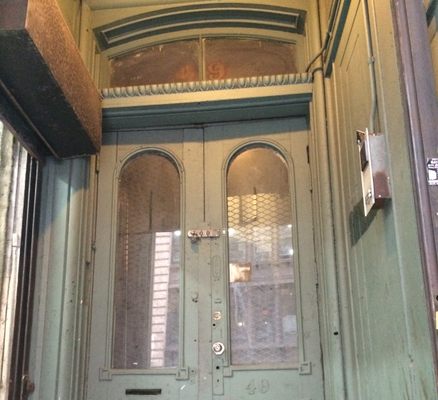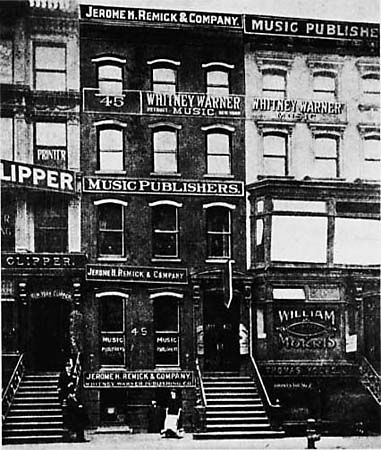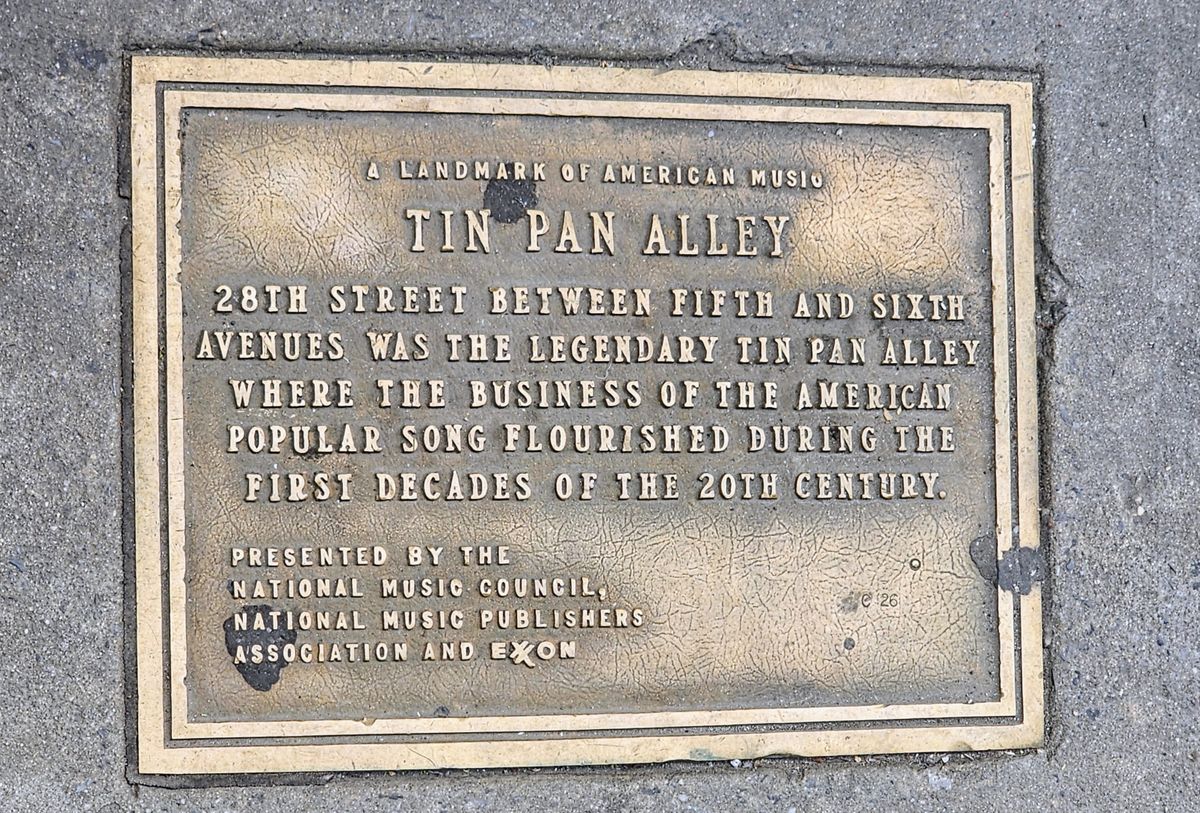About
Tin Pan Alley is synonymous with the golden age of American song writing, when New York was the world's epicenter of composing, lyric writing, and sheet music publishing. But less known is that Tin Pan Alley was an actual place, a small section of West 28th Street between Broadway and Sixth Avenue.
Here in a line of small row houses, some of the most loved tunes in the American songbook were written, by names such as Irving Berlin, George Gershwin, Hoagy Carmichael, and Sammy Cahn. Today, Tin Pan Alley still exists, but the street of old brownstones are in a sadly dilapidated state, unprotected by the city or by any landmark status, and at constant risk of being demolished. This small street is today largely filled with wholesalers and cell phone accessory stores, whilst the historic buildings themselves are steadily falling apart through neglect.
The heyday of Tin Pan Alley ran approximately from the 1880s to about the time of the Great Depression. Following the Civil War, sales of parlour pianos boomed throughout the country, with some estimates putting sales at around 25,000 new pianos a year. In an era before radios and records, parlour pianos made by companies such as Baldwin, Wissner, and Sterling provided the most popular forms of home entertainment. And all these pianos led to a soon prospering business in composing and sheet music publishing.
The origins of "Tin Pan Alley" itself are unrecorded, although the most commonly told story is of a reporter from the now defunct New York Herald, called Monroe Rosenfeld, who, whilst walking down this small block on 28th Street, heard the dissonant sound of dozens of pianos in the publishing houses lining the street, competing with each other through the open windows. “It sounds like a bunch of tin pans clanging,” he is reported to have said.
The Tin Pan Alley of turn of the century New York was a vibrant, frenetic block; starting with the owners of the publishing companies themselves, such as Irving Berlin, Isadore Witmark, Thomas Harms, and the Remick Music Company. Each house kept a staff of composers and song writers, who would write in such varied styles as vaudeville, operettas, rags, comic songs, and ballads. Often the songs were sold as separate sheets with luxuriously designed covers. Houses would also hire "song pluggers," musicians and singers who would then perform the new songs in the music shops to expose them to both the public and the entertainers who would visit Tin Pan Alley in search of new songs for their acts.
Today, the theatre district is most commonly connected with Times Square, but during this era, the theatres lined Broadway a little further down, centred around Herald Square, just on Tin Pan Alley's doorstep. Countless theaters, vaudeville houses, and musical saloons thronged the neighborhood, with all of them searching for new songs. Roy McCardell, a reporter for the New York World, wrote about visiting Tin Pan Alley in 1903, "Every day you'll see noted people in the musical comedy world hunting in the "Alley" for songs that will add to their fame - Paula Edwardes, Marie Cahill, Blanche Ring, Dan Daly, Marie Dressler, and Lew Dockstader active in the hunt." Names that have all but faded from history.
Walking down Tin Pan Alley today is a different experience. Many of the old brownstones which have survived demolition are in advanced stages of neglect, and are slowly falling apart, despite their importance to American culture. Across the street from No. 45, (which published music by George Gershwin, as well as the Wizard of Oz), is a slender, ornately decorated building, No. 40, looking today much as it did in 1908 when Jack Norworth and Albert Von Tilzer wrote “Take Me Out To The Ballgame.” One of the great songwriters of Tin Pan Alley, George M. Cohan, wrote over 300 songs at Tin Pan Alley, most notably the World War I hit "Over There," and "Give My Regards To Broadway." Other notable songs written here include "Alexander's Ragtime Band," "Sweet Georgia Brown" and "God Bless America."
The advent of phonographs and the radio saw the popularity of home piano playing rapidly dwindle, and by the 1920s, the once great publishing houses of Tin Pan Alley were virtually all gone. Today the history of this small street, that gave birth to the modern music industry, and where some of America’s most beloved songs were written, was largely forgotten.
On December 10th, 2019, five buildings on West 28th Street between 6th Avenue and Broadway were designated as “culturally and historically significant” by the Landmarks Preservation Committee of New York City.
Related Tags
Community Contributors
Added By
Published
November 11, 2015
Sources
- http://parlorsongs.com/insearch/tinpanalley/tinpanalley.php
- https://en.wikipedia.org/wiki/Tin_Pan_Alley
- http://www.songwritershalloffame.org/exhibits/eras/C1002
- http://www.nytimes.com/2003/07/13/realestate/streetscapes-west-28th-street-broadway-sixth-tin-pan-alley-chockablock-with-life.html
- http://experiencenomad.com/location/tin-pan-alley/
- https://www1.nyc.gov/site/lpc/about/pr2019/lpc-designates-five-historic-buildings-associated-with-tin-pan-alley.page










































